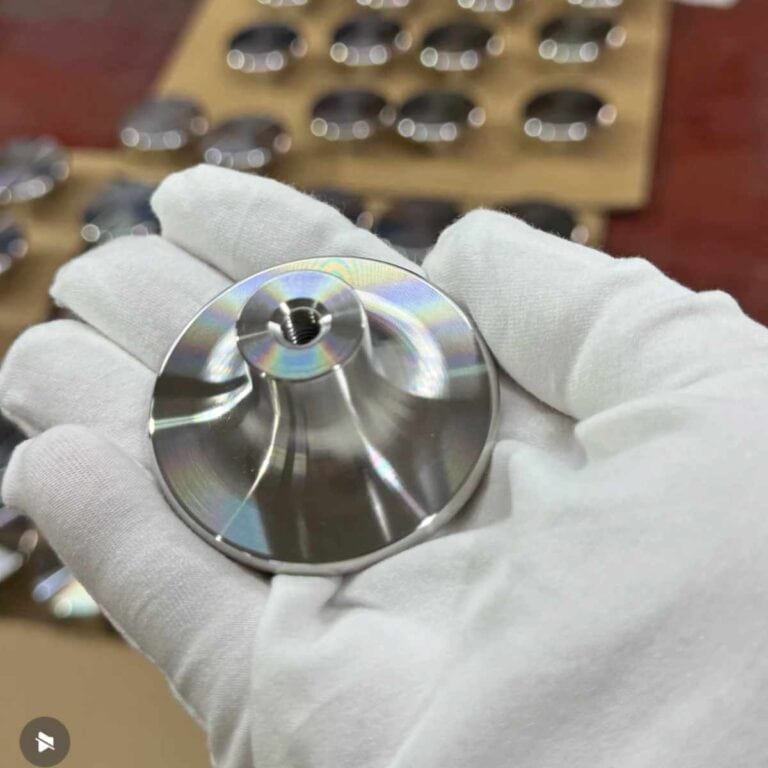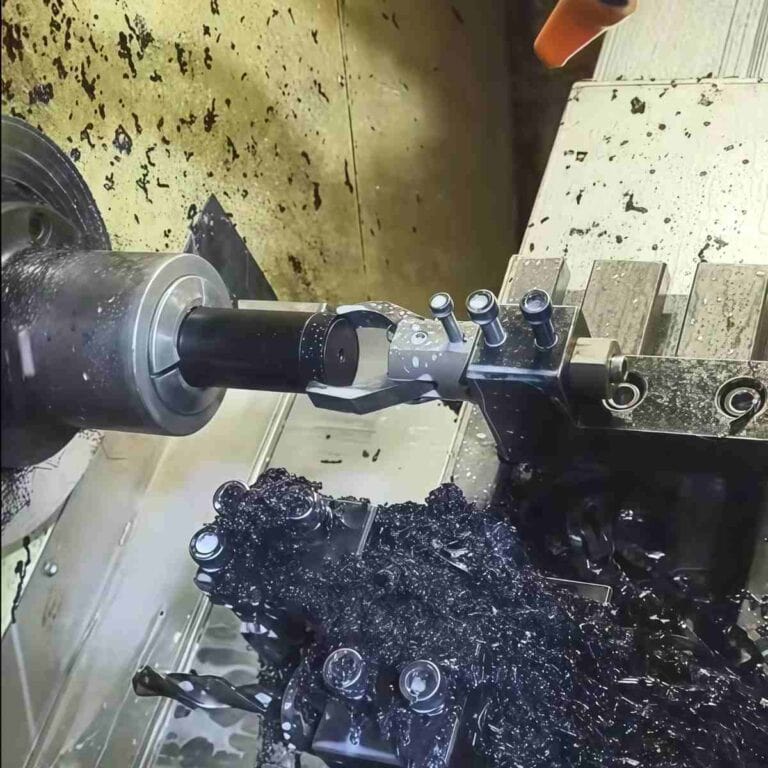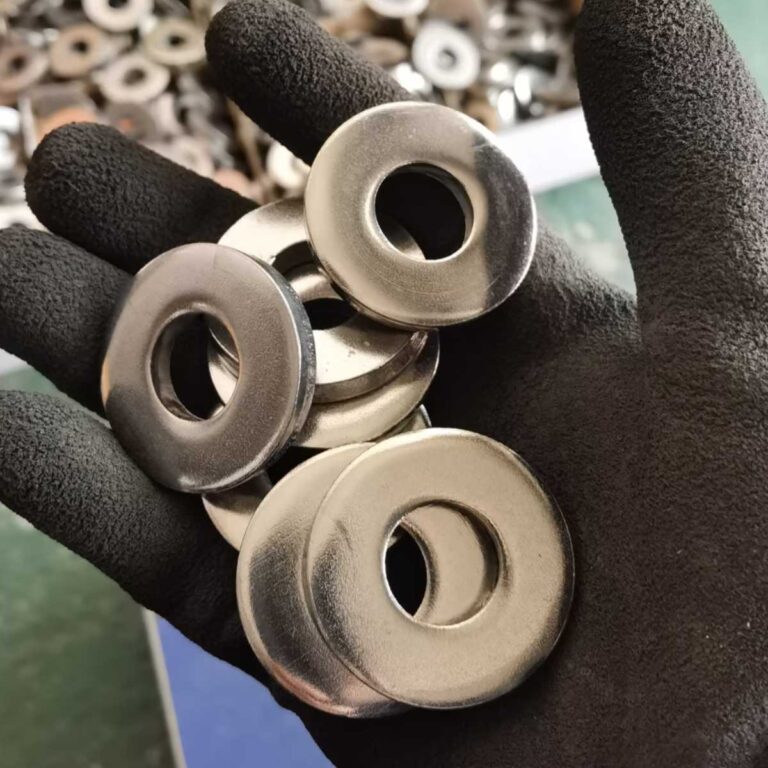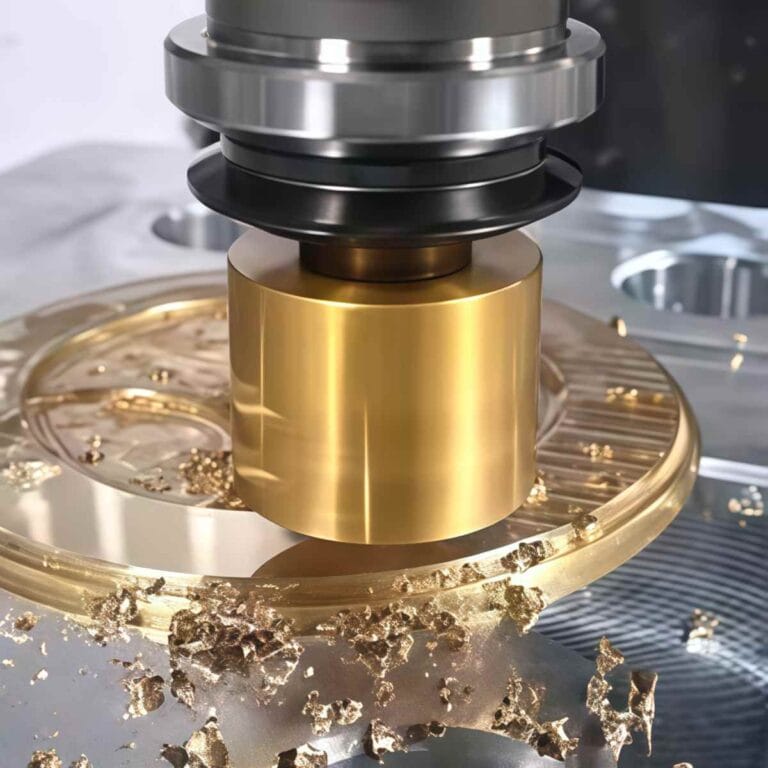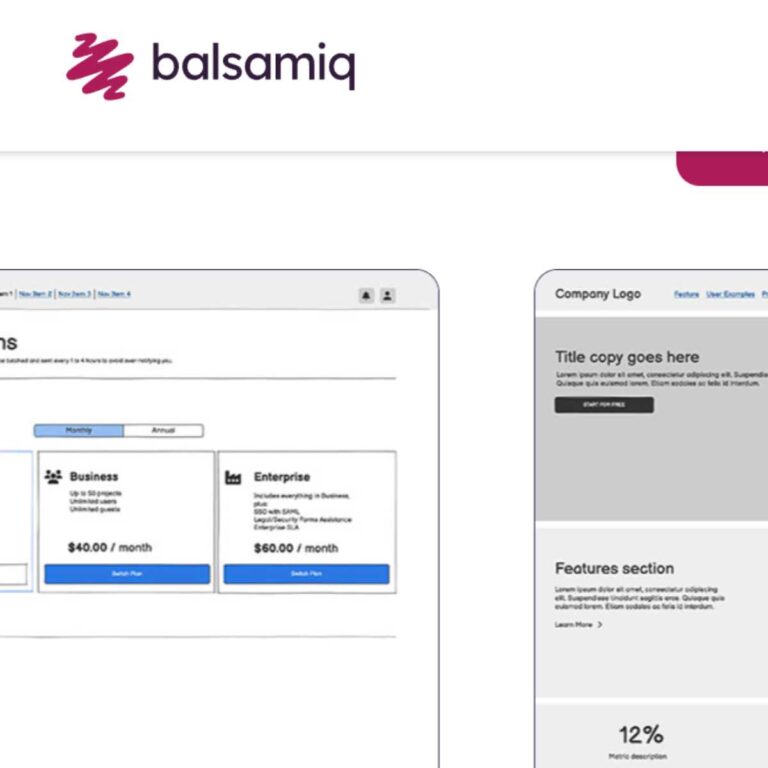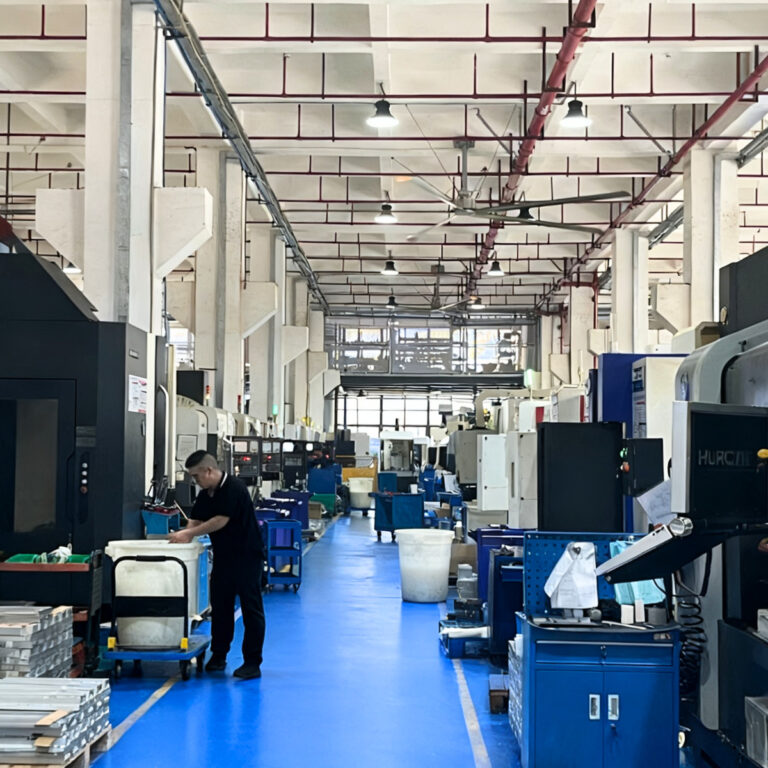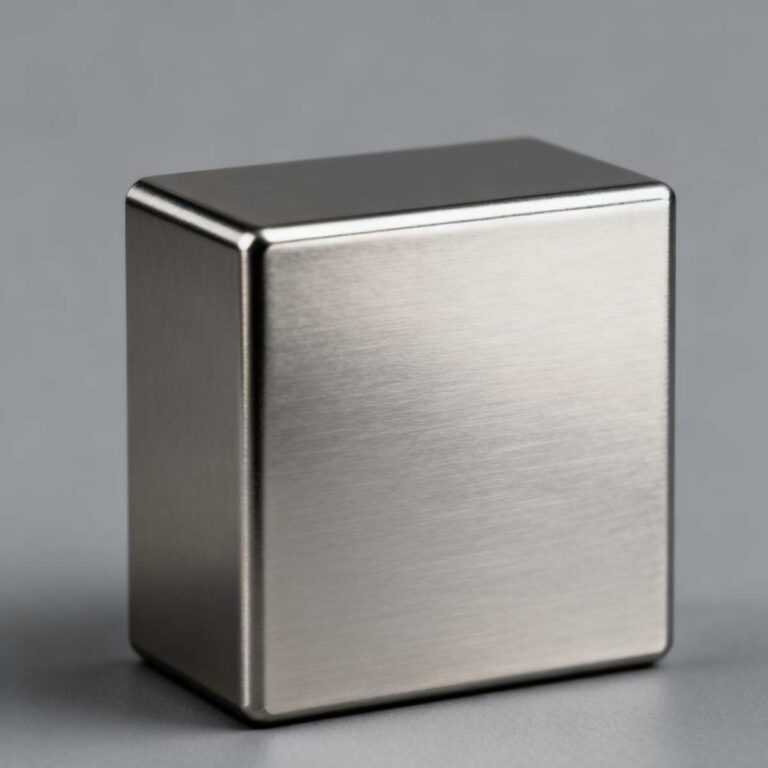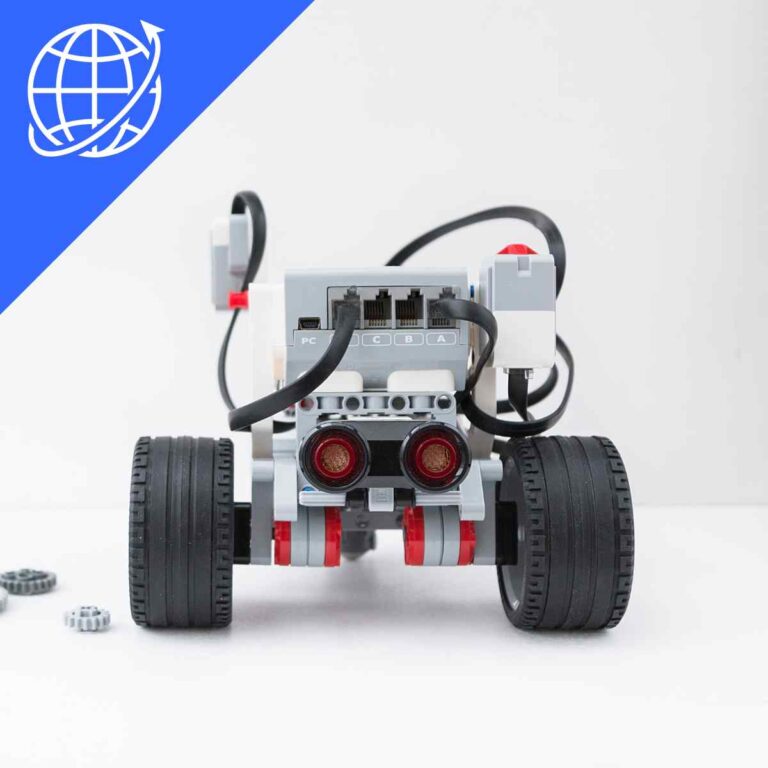When people ask me which engraving method is better—laser engraving vs engraving (CNC)—I always say: “It depends on what you’re trying to achieve.” Both are excellent techniques, but they’re fundamentally different in how they operate, the types of materials they work with, their depth, cost, and final result. Laser engraving is all about high speed and precision using thermal energy, while CNC engraving is about depth, force, and dimensional shaping using mechanical tools. In this article, I’ll walk you through the differences based on principles, materials, precision, cost, and applications to help you make the right decision for your project.
What Is Laser Engraving
Laser engraving is a non-contact thermal process that vaporizes or melts the surface of materials to create permanent marks. It’s ideal for high-precision tasks like serial numbers or logos. Fiber lasers work best on metals, while CO₂ lasers suit non-metals. Typical depths range from 0.0001” to 0.003”. The process involves file setup, parameter adjustment, focusing, engraving, and final inspection.

Working Principle Of Laser Engraving
Laser engraving is fundamentally a thermal energy-based subtractive process. Unlike traditional mechanical engraving, which relies on physical contact and force, laser engraving uses a highly focused beam of coherent light to precisely remove material from the surface. The core mechanism lies in how the material absorbs laser energy and converts it into heat—causing localized vaporization or melting in microseconds.
The laser beam is typically focused to a spot size as small as 20–50 microns, concentrating energy at power densities exceeding 10⁶–10⁹ W/cm². When the beam hits the surface, the material absorbs the energy (depending on its absorption coefficient and reflectivity), and its temperature rapidly rises beyond its melting point or vaporization point.
For example,for metals like aluminum or stainless steel, vaporization temperatures can exceed 4000–5000°F (2200–2700°C).
For organic materials such as wood or plastic, surface pyrolysis or melting can occur at much lower temperatures (300–600°C).
Depending on the material and laser type, the beam can either directly vaporize the material (usually in high-power, low-speed settings), forming a cavity, or melt and displace the material through thermal expansion and localized phase changes (common in low-energy, high-speed channels).
The two most commonly used laser types in engraving are:
Fiber lasers (1064 nm wavelength): Well-absorbed by metals and hard engineering plastics. These systems are highly efficient, compact, and offer beam qualities (M² < 1.5) suitable for high-resolution text or codes on metal.
CO₂ lasers (10.6 μm wavelength): Ideal for engraving non-metals such as wood, leather, acrylic, and glass. The longer wavelength is strongly absorbed by organic compounds, ensuring smooth thermal ablation.
Engraving depth is controlled by laser power (typically 20–100W for fiber, 30–150W for CO₂), pulse duration, frequency, and number of passes. Common depth ranges from 0.0001” (2.5 µm) for shallow surface marking, up to 0.003” (75 µm) for deeper, more tactile effects. Multi-pass engraving or high-power systems can go deeper depending on the material.
Modern laser systems achieve engraving resolutions of up to 1200 dpi, allowing for the creation of extremely fine features like QR codes, 2D data matrix codes, microtext, and complex vector graphics. The non-contact nature of the process eliminates tool wear and mechanical stress, making it ideal for delicate or thin-walled components.
In essence, laser engraving leverages precise thermal control and optical focusing to perform high-resolution, high-speed material removal—transforming energy into accuracy.
Process Of Laser Engraving
The laser engraving process is a highly controlled and repeatable sequence that determines the precision, contrast, and consistency of the final result. Each stage—from digital design to post-engraving inspection—plays a critical role in ensuring optimal quality, especially for industrial and high-spec applications.
- Prepare The Design File
The engraving process begins with preparing a digital design, typically in vector file formats such as SVG, AI, or DXF. These formats allow for clean, scalable paths that the laser system can interpret with sub-millimeter precision. Bitmap images (e.g., JPEG or PNG) may be used in raster mode but often lack edge clarity.
Key design considerations include:
Minimum line width: ≥0.1 mm for optimal visibility
Font selection: Monoline or stencil fonts for better legibility at small sizes
Layout accuracy: Ensuring the artwork matches the workpiece size and alignment
- Set Laser Parameters
Laser settings are configured based on the material type, thickness, and desired engraving characteristics. The primary parameters include:
Laser power: Typically set between 10–100% of the system’s rated output (e.g., 20W to 60W)
Scanning speed: Ranges from 100 to 1000 mm/s, slower for metals, faster for plastics or organics
Pulse frequency: 20–100 kHz, higher frequencies produce smoother edges
Number of passes: 1–5, depending on target depth
Hatch spacing: Commonly 0.05–0.1 mm, determines fill density and surface smoothness
For example, engraving 304 stainless steel with a 30W fiber laser may require 400 mm/s speed at 60 kHz, resulting in a mark depth of approximately 0.0015″ (38 μm) in one pass.
- Focus the Beam
Proper focus is essential for achieving high energy density and fine detail. The beam focal length depends on the lens used—typically 100 mm or 160 mm F-theta lenses in galvo systems. Even a ±0.5 mm deviation from the optimal focal point can reduce mark clarity and depth.
Focus is usually adjusted via:
Manual Z-axis controls using focus gauges or test grids
Autofocus systems with built-in sensors for production machines
- Execute the Engraving
Once parameters and focal distance are confirmed, the engraving process is initiated. The laser head—guided by a galvanometric scanner or XY gantry system—follows the predefined toolpath with micron-level accuracy.
Repeatability: Typically within ±0.01 mm
Positioning accuracy: Up to ±0.003 mm for high-end fiber systems
For large areas, stitching or tiling algorithms maintain geometric integrity
During execution, proper fume extraction is crucial to remove vaporized particles, protect optics, and ensure operator safety—especially when processing plastics or coated metals.
- Post-Engraving Inspection
After engraving, a quality check is performed to verify:
Edge sharpness and line integrity
Thermal effects such as charring, burn marks, or haloing
Contrast between the mark and base material
Engraving depth uniformity, which is critical for calibration marks or wear-resistant applications
Advanced inspection tools such as digital microscopes or laser profilometers are used for precision-critical components, ensuring depth and alignment tolerances within ±0.0005” (12.7 μm) and ±0.002” (50 μm) respectively.
What Is CNC Engraving
CNC engraving is a subtractive process using computer-controlled rotating tools to cut material with depth and texture. Guided by G-code, it offers engraving depths from **0.02” to 0.125”**, ideal for structural features and tactile marks. Unlike laser engraving’s thermal method, CNC provides deeper, mechanical cuts, making it suitable for metals, woods, and parts requiring durability.
Working Principle Of CNC Engraving
CNC (Computer Numerical Control) engraving is a mechanical subtractive manufacturing process that uses precision-controlled rotary cutting tools to remove material from a solid workpiece. Unlike laser engraving, which relies on heat, CNC engraving applies direct mechanical force to achieve desired depths, contours, and surface textures. This method is especially effective for parts requiring structural integrity, tactile markings, or three-dimensional detail.
At the heart of CNC engraving is a rotating spindle equipped with an end mill, engraving bit, or V-bit. The cutting tool rotates at high speeds—typically between 6,000 and 24,000 RPM, depending on the material—while moving along programmed toolpaths generated by CAM (Computer-Aided Manufacturing) software. These toolpaths are converted into G-code, which directs the machine’s linear and rotary movements along the X, Y, and Z axes.
Cutting Depth: Standard engraving depth ranges from 0.02” (0.5 mm) for shallow surface logos to 0.125” (3.2 mm) or more for deep cavity engraving. Softer materials (e.g., wood, plastic) allow for deeper cuts, while harder metals (e.g., stainless steel) may require multiple passes.
Spindle Power: Typical desktop CNC engravers use 300W–1.5kW spindles, while industrial machines may operate with 3kW or more to handle dense materials and maintain feed rates without deflection.
Feed Rate: Controlled by G-code, feed rates can range from 100 mm/min to over 3000 mm/min, optimized to balance chip load, surface finish, and tool life. Tool selection (e.g., diameter, flute count, coating) also directly affects performance and material compatibility.
Toolpath Strategy: CNC engraving supports roughing, finishing, ramping, and contouring strategies. For fine detail, small-diameter tools (as small as 0.3 mm) are used, although they require slower feeds and multiple passes.
Since CNC engraving is a contact-based method, material fixturing and workpiece clamping are critical to avoid vibrations, misalignment, or tool breakage. Workholding options include vacuum beds, vises, clamps, or adhesive fixtures depending on the part geometry and production volume.
Overall, CNC engraving offers high accuracy (typically within ±0.01 mm) and excellent repeatability, making it a reliable process for engraving serial numbers, industrial logos, mold cavities, and high-wear mechanical components across a variety of materials—from aluminum and brass to wood, PMMA, and carbon fiber composites.
Engraving Workflow
The CNC engraving workflow consists of five tightly integrated steps—from digital design to post-process surface finishing—each of which directly influences the dimensional accuracy, cycle time, and surface quality of the final part. Proper execution ensures consistent results, especially in high-precision or repeat-order manufacturing.
- CAD Design & CAM Toolpath Programming
The process begins in CAD software (e.g., SolidWorks, Fusion 360, AutoCAD) where the part geometry, lettering, or artistic patterns are created. Once complete, the model is imported into CAM software to define the toolpath strategy—the sequence, direction, depth, and speed of cutting operations.
Toolpath Types: Common strategies include 2D contour, engraving, pocketing, and V-carving.
Cutting sequence: The CAM output prioritizes roughing before finishing to optimize time and tool wear.
Output format: CAM exports the job in G-code, which drives the CNC controller across X, Y, Z axes, and optionally A/B axes for 4/5-axis systems.
Tolerances: Most engraving operations aim for a repeatability of ±0.01 mm, with some high-end setups capable of ±0.005 mm.
- Material Setup and Fixturing
Precise fixturing is crucial for both safety and precision. The workpiece must be rigidly secured to eliminate vibration, chatter, or positional drift during machining.
Clamping Options: Includes toe clamps, vises, vacuum tables, and double-sided adhesive tapes.
Alignment tools: Dial indicators or probing systems are used to square and zero the material accurately.
Fixturing repeatability: High-end systems can maintain part alignment within ±0.02 mm using dedicated jigs.
- Tool Selection
The choice of tool depends on the desired resolution, material hardness, and feature size:
Tool types: Common engraving bits include V-bits (30°/60°) for sharp linework and flat end mills (0.3–2.0 mm diameter) for filled logos or recessed text.
Tool material: High-speed steel (HSS), solid carbide, and diamond-coated tools are selected based on the workpiece material.
Cutting parameters: A 1 mm solid carbide bit might run at 12,000 RPM with a feed rate of 500 mm/min on aluminum.
Proper tool selection balances between surface finish, cycle time, and tool life.
- Roughing & Finishing Passes
CNC engraving typically involves at least two machining stages:
Roughing pass: Removes excess material quickly using larger tools (e.g., 3 mm end mill), leaving a small offset to avoid overcutting.
Finishing pass: Refines details with smaller tools (e.g., 0.5 mm) at slower feed rates for optimal precision and smoothness.
Stepdown control: Depth increments (Z-step) are kept between 0.1–0.3 mm depending on material to avoid tool deflection or chatter.
This staged approach minimizes stress on the workpiece and prolongs tool life.
- Post-Processing and Finishing
After machining, minor surface treatment may be needed:
Sanding: Light hand sanding (e.g., with 800–1200 grit paper) removes burrs or tool marks.
Deburring: Rotary deburring tools or ultrasonic baths are used for small-scale text.
Cleaning: Parts are wiped or air-blown to remove dust, then cleaned with solvents like IPA.
For aesthetic or functional reasons, parts may also undergo anodizing, painting, or clear coating after engraving—especially in branding or consumer product applications.
Thermal vs. Mechanical: Process Comparison
When evaluating laser engraving and CNC engraving, the most fundamental distinction lies in how energy is applied to the material—thermal vs. mechanical—each offering unique advantages and limitations across precision, material compatibility, and structural outcomes.
Material Compatibility Comparison
Material choice impacts engraving performance. Laser engraving works well on metals, plastics, wood, leather, and coated glass but struggles with transparent or reflective surfaces unless pre-treated. CNC engraving easily handles metals, engineering plastics, hardwoods, carbon fiber, and FR4, cutting up to 0.125”. CNC produces polished edges on clear acrylic and reflective metals, while lasers excel in fine, high-contrast surface marking.
| Material Category | Laser-Compatible Materials | CNC-Compatible Materials |
| Metals | Stainless steel, anodized aluminum, brass | Aluminum, brass, copper, stainless steel |
| Plastics | ABS, acrylic (PMMA), polycarbonate | Delrin (POM), nylon, PMMA |
| Organic Materials | Wood, paper, leather | Plywood, MDF, hardwoods |
| Composites | Typically difficult (require special coatings or setup) | Carbon fiber, FR4 (fiberglass-reinforced epoxy) |
| Glass & Ceramics | Can be engraved using masking or special coatings | Generally not suitable or very difficult |
| Special Notes | Struggles with highly reflective or transparent materials unless pre-treated | Suitable for curved or multi-layered materials with proper fixturing |
Transparency And Reflectivity Challenges
Transparent and reflective materials pose unique challenges for engraving technologies.
Transparent Acrylic:
Laser engraving struggles with clear acrylic (like PMMA), as CO₂ lasers (10.6 μm) pass through without sufficient absorption. To resolve this, surfaces are often pre-treated with black paint or masking tape to enhance contrast. Without treatment, engraving depth is typically limited to 0.0001”–0.002”. In contrast, CNC engraving handles transparency well—high-speed routing (18,000–24,000 RPM) with single-flute bits delivers clear, polished edges without surface prep.
Reflective Metals:
Polished aluminum or chrome can reflect the laser beam, reducing marking efficiency and risking backscatter damage. Fiber lasers (20W–50W) combined with black marking sprays are often used to ensure safe, consistent marks. CNC engraving, however, is unaffected by reflectivity and achieves deeper cuts up to 0.125” using carbide tools and proper coolant.
In summary, CNC excels with clear and reflective surfaces without additional treatment, while laser requires surface modification to ensure performance and precision.
Depth And Precision Comparison
Laser engraving provides high-resolution results (up to 1200 dpi) with shallow depths (0.0001”–0.003”), ideal for fine details like logos and barcodes. In contrast, CNC engraving achieves deeper cuts (0.02”–0.125”) and tactile 3D effects, making it better for structural applications. Laser is cleaner but may cause discoloration, CNC offers depth but requires post-processing. Each method serves different needs based on precision or depth.

Laser Engraving : Shallow Marks And High Resolution
Laser engraving offers unmatched accuracy when it comes to shallow, detailed surface markings. The engraving depth typically ranges from 0.0001” to 0.003” (2.5 to 75 μm), depending on laser type, power (commonly 20–60W for fiber and CO₂ lasers), and material properties such as reflectivity and thermal conductivity.
Laser systems can achieve resolutions up to 1000–1200 dpi, allowing them to produce crisp lines, dense QR codes, 1D/2D barcodes, micro text as small as 0.5 mm in height, and intricate logos with consistent repeatability. This level of resolution is essential in industries like medical, aerospace, and electronics, where part traceability or branding on very small components is critical.
Due to the non-contact nature of the process, there’s virtually no mechanical distortion, and edge definition remains extremely sharp. However, because the marking is superficial, it does not generate physical relief or depth that can be felt by touch. This makes laser engraving optimal for visual contrast rather than tactile feedback or functional engraving.
CNC Engraving : Depth And 3D Expression
CNC engraving distinguishes itself with its ability to cut significantly deeper into materials, producing real 3D relief and tactile detail. Depending on the tool diameter, spindle speed, and material hardness, cutting depths can reach up to 0.125” (3.2 mm) in materials like aluminum, brass, hardwood, or engineering plastics. For softer woods or plastics, depths may even exceed 4 mm with appropriate step-down passes.
The subtractive nature of CNC allows for the creation of multi-level designs, beveled edges, or complex geometries that cannot be replicated by laser alone. Using V-bits, ball nose, or tapered end mills, it’s possible to achieve sculpted textures or lettering with true dimensionality—ideal for mold cavities, architectural panels, or custom signage.
Because the material is physically removed rather than thermally altered, CNC engraving avoids heat-affected zones (HAZ) and discoloration, offering consistent finish quality. This process is preferred when structural depth, durability, or mechanical function is required in the engraved features.
Surface Finish And Edge Comparison
Laser engraving delivers smooth, high-contrast finishes, especially on anodized aluminum and coated metals. However, on materials like wood or plastics, heat can cause burn marks, charring, or yellowing—particularly at power levels above 40 W or speeds below 300 mm/s. These effects may require masking or post-cleaning for optimal visual quality.
In contrast, CNC engraving produces sharp, well-defined edges with physical depth, particularly when using small-diameter tools and optimized feed rates (e.g., 200–800 mm/min for metals). However, due to mechanical contact, burrs, tool marks, and surface irregularities may occur—especially in ductile materials like aluminum. Post-processing such as deburring, sanding, or polishing is often required to enhance surface quality.
Overall, laser excels in surface smoothness and contras, while CNC offers better edge definition and depth—provided finishing steps are accounted for in the workflow.
Productivity And Cost Analysis
Laser engraving is ideal for high-speed, automated production with low maintenance and operating costs, especially on soft materials. It suits repeatable tasks with minimal tool wear. CNC engraving, while more flexible for complex shapes and prototyping, involves higher upfront cost, tool wear, and a steeper learning curve due to setup and CAM programming.
Laser In High-Volume and Automation
Laser engraving is particularly well-suited for high-throughput production environments, especially when dealing with soft materials such as wood, acrylic, or coated metals. On substrates like anodized aluminum, lasers operating at 20–50 W power and speeds exceeding 500 mm/s can mark thousands of parts per day with consistent quality.
Speed & Repeatability: In automated lines, lasers can achieve engraving cycle times as low as 1–3 seconds per part, depending on design complexity and material reflectivity.
Zero Tool Wear: As a non-contact process, laser systems do not rely on cutting tools, eliminating the need for bit replacement and significantly reducing long-term maintenance costs.
Energy Efficiency: Typical fiber laser systems consume around 150–300 W of electrical power, making them cost-effective for continuous operation compared to CNC routers, which often require multi-kilowatt spindles.
Automation Integration: Laser engraving heads can be easily integrated with robotic arms, conveyor belts, and vision systems for inline inspection, enabling seamless incorporation into Industry 4.0 smart factories. These integrations often use standardized communication protocols such as Modbus, EtherCAT, or OPC-UA for synchronized control.
In summary, laser engraving is a scalable, low-maintenance, and high-speed solution for volume-driven industries, such as consumer electronics, automotive part marking, and medical device serialization.
CNC For Complexity And Prototyping
CNC engraving is a preferred method for projects requiring complex geometries, multi-axis motion, or deep material removal. Although inherently slower than laser processing, CNC offers unmatched flexibility when dealing with a wide variety of materials and structural requirements.
Material Compatibility: CNC machines can cut or engrave metals (aluminum, brass, steel), engineering plastics (Delrin, nylon, PEEK), wood, and composites (carbon fiber, FR4). Spindle speeds typically range from 6,000 to 24,000 RPM, allowing adaptability based on hardness and material brittleness.
Depth & 3D Capability: For intricate 3D surfaces or multi-level engraving, CNC supports step-down passes with depths up to 0.125” (3.2 mm) or more, ideal for mold cavities, embossing dies, or industrial nameplates.
Custom Geometry: CNC supports 4-axis or 5-axis movement, making it suitable for curved surfaces, angled faces, or engraving on cylindrical objects—a task that’s difficult for laser engravers without rotary attachments.
Tool Wear & Maintenance: Unlike laser engraving, CNC involves physical contact with the material. Tool bits (e.g., end mills or V-bits) wear with time—typically after 20–40 hours of continuous machining in metals—and must be replaced to maintain precision. This adds to both operating cost and downtime.
CNC engraving is indispensable for functional prototypes, low-volume custom parts, and engraving that requires depth, relief, or machining precision across diverse materials and forms.
Equipment And Operational Cost Comparison
| Factor | Laser Engraver | CNC Engraver |
| Initial Cost | Medium ($5,000–$30,000 depending on power and brand) | Higher ($15,000–$80,000 including machine, tools, and fixturing system) |
| Maintenance | Low – No cutting tools, CO₂ tubes may need replacement every ~1,000 hrs | Medium – Regular tool replacement, lubrication, and spindle maintenance required |
| Operating Cost | Low – Power usage around 0.3–1.5 kWh, no consumables | Medium to High – 2–6 kWh energy usage + tool wear, dust extraction, and cooling costs |
| Learning Curve | Easier – Based on vector files (AI, SVG), minimal fixturing complexity | Steeper – Requires CAD/CAM programming, toolpath optimization, and workholding setup |
| Automation Potential | High – Easily integrates with robotic arms, conveyors, or inline inspection | Low to Medium – Tool changes and clamping complexity limit automation capabilities |
| Material Flexibility | Medium – Works well on metals, plastics, wood, and coated glass | High – Can cut deep into metals, composites, hardwoods, and multilayer materials |
| Wear & Upkeep Cycle | Very Low – Laser sources last 20,000–100,000 hours depending on type | Medium – Tool bits typically last 2–40 hours depending on material and machining rate |
Typical Applications Comparison
Laser engraving is ideal for fast, precise tasks like serial numbers, barcodes, and branding on jewelry or electronics. It offers clean visual output. CNC engraving suits structural needs—like furniture inlays or mold labeling—where depth and tactile relief are important. In tests, laser offered quicker, sharper visuals, while CNC provided deeper, more durable markings, better for rugged environments. Choice depends on application purpose.
| Engraving Type | Application | Industry Examples | Key Requirements |
| Laser Engraving | Serial numbers, barcodes, logos | Electronics, medical devices, tools | High resolution (≥600 dpi), excellent contrast, traceability |
| Tamper-proof & anti-counterfeit codes | Pharmaceuticals, luxury goods | Micro text precision, minimal heat distortion | |
| Custom gifts, electronics, jewelry | E-commerce, retail personalization | Clean finish, high detail accuracy, fast cycle times | |
| CNC Engraving | Furniture inlays, signboards | Furniture design, signage, architecture | Multi-depth carving, sharp edges, artistic expression |
| Mold cavity labeling | Injection molding, die casting | Durable markings, compatibility with hardened tool steels | |
| Custom mechanical part marking | Aerospace, automotive, industrial robotics | Structural depth, wear resistance, dimensional repeatability |
Case Study: Same Design, Different Results
To compare the practical output of laser and CNC engraving, a controlled test was conducted using the same company logo engraved on a 304 stainless steel plate (100 mm × 50 mm × 3 mm). The goal was to assess visual clarity, engraving depth, production time, and suitability for different application environments.
Laser Engraving Result
Machine: 30W fiber laser, 1064 nm wavelength
Engraving Time: 1.8 minutes
Depth: Approximately 0.002” (50 μm)
Visual Output: Crisp lines, high contrast, excellent readability even for fine strokes under 0.2 mm
Surface Impact: Minimal—no visible warping or discoloration
Conclusion: Ideal for visual branding, fast-turnaround marking, or serialized batch production
CNC Engraving Result
Machine: 3-axis CNC mill, 24,000 rpm spindle with 0.5 mm flat-end carbide bit
Engraving Time: 10 minutes total (2 minutes setup, 8 minutes machining)
Depth: Approximately 0.04” (1 mm)
Visual Output: Bold, tactile lines with strong relief, creating a physical texture
Surface Impact: Required post-deburring to remove sharp tool marks
Conclusion: Better suited for industrial parts exposed to wear or requiring mechanical identification
While laser engraving delivered a sharper and more aesthetic finish, CNC engraving offered superior durability and physical presence, making it more appropriate for rugged, high-contact use cases. The choice between the two largely depends on application priorities—speed and contrast vs. structure and longevity.
Durability And Lifespan
Laser engraving is precise but may fade over time, especially without protective coating. It’s best for indoor or low-wear applications. CNC engraving creates deeper marks that resist abrasion, weather, and handling, making it ideal for rugged or outdoor use. For longevity and durability, CNC is the more robust choice.
Laser: Heat-Affected Zone And Wear Resistance
Laser engraving, being a thermal process, creates a heat-affected zone (HAZ)—a localized area where the material’s microstructure may be altered by high temperatures. This zone is generally shallow, with engraving depths ranging from 0.0001” to 0.003” (2.5–75 μm) depending on the material and laser parameters (typically 20–60W for CO₂ or fiber lasers).
Oxidation and Fading Risk: On untreated metals like stainless steel or bare aluminum, the HAZ may oxidize, discolor, or gradually fade under abrasive wear, UV exposure, or chemical contact, especially in outdoor or high-friction environments.
Indoor Durability: For applications such as nameplates, serial numbers, or decorative panels kept in controlled environments, laser markings maintain clarity and contrast for 5–10 years without significant degradation.
Enhanced Resistance via Surface Treatment: To improve longevity, anodizing, powder coating, or protective clear coats can be applied post-engraving. For example, anodized aluminum retains laser contrast with minimal fading for over 20,000 abrasion cycles in standardized ASTM D4060 Taber tests.
In summary, while laser engraving offers high precision and clean visuals, its wear resistance heavily depends on both environmental exposure and surface treatment. For long-term durability in demanding conditions, reinforcement is recommended.
CNC: Physical Stability And Long-Term Use
CNC engraving relies on mechanical cutting, producing physically recessed marks that offer exceptional durability across a wide range of applications. Unlike surface-level markings, CNC cuts can reach depths of 0.02” to 0.125” (0.5 mm to 3.2 mm) depending on the tool type, material hardness, and spindle power (commonly 1.5 kW to 5 kW in industrial setups).
Abrasion and Impact Resistance: Because the engraving is physically cut into the material, it withstands mechanical wear, friction, and abrasive cleaning processes (such as shot blasting or sandblasting). Even after >50,000 abrasion cycles, CNC-engraved features remain legible.
Weather and Chemical Exposure: CNC engravings maintain structural integrity under outdoor exposure, including UV radiation, rain, and temperature fluctuations. On stainless steel or anodized aluminum, depth-based marking ensures readability even after 10+ years in industrial or marine environments.
Post-Processing Compatibility: CNC marks remain intact through painting, coating, thermal treatments, and even chemical etching. For example, mold cavity codes engraved via CNC can survive mold polishing or die coating processes without distortion.
Overall, CNC engraving is ideal for applications requiring structural permanence, long-term outdoor use, or exposure to harsh physical or chemical conditions. Its depth and mechanical nature give it a distinct advantage in terms of service lifespan.
FAQs
What Do People Use Laser Engravers For?
Laser engravers are widely used for product marking, branding, and personalization. Typical applications include serial numbers, barcodes, QR codes, and logos on metals, plastics, and electronics. They are also used for custom gifts, jewelry, awards, and signage. Industrially, laser engraving ensures traceability and anti-counterfeiting, supporting industries such as automotive, aerospace, and medical devices, processing thousands of parts daily with precision up to 1200 dpi.
Is Laser Engraving Dangerous?
Laser engraving is safe if proper precautions are followed. High-powered lasers (20W–100W fiber or CO₂) can cause eye injuries, skin burns, or fire hazards if misused. Industrial systems are typically Class 4 lasers, requiring enclosures, exhaust systems, and laser safety goggles. Many machines meet ISO 11553 safety standards. With adequate training and fume extraction for materials like PVC, laser engraving is considered a controlled, low-risk process in professional environments.
Which Is Better, A CNC Or laser Engraver?
Choice depends on application: laser engravers excel at high-resolution surface marking (0.0001″–0.003″ depth, 1–3 seconds/part), ideal for logos, serial numbers, and micro-text. CNC engravers handle deeper cuts (up to 0.125″), 3D reliefs, and structural engraving on hard materials. Laser is faster and lower maintenance, while CNC offers tactile depth and multi-surface machining. For mass production and fine detail, choose laser, for structural or artistic depth, choose CNC.
Can Laser Engraving Be Removed?
Laser engraving alters the material surface, making it semi-permanent. Shallow marks (0.0001″–0.003″) on metals or plastics can sometimes be removed by sanding, polishing, or re-machining. Deep engravings require material removal, which may compromise structural integrity. On coated surfaces (e.g., anodized aluminum), refinishing or re-coating can hide engravings. For security or anti-counterfeit applications, engraving is considered effectively permanent unless specialized abrasive or laser ablation equipment is used.
Can Laser Engraving Damage Electronics?
Direct laser engraving on electronic housings or circuit boards carries risks. Improper settings or excessive power can penetrate protective layers, damage solder joints, or induce localized heating >200°C, potentially harming sensitive components. However, controlled laser marking using low-power fiber lasers or galvo systems on outer casings is standard practice in electronics manufacturing, including marking PCBs, connectors, and IC packages. Proper thermal control, masking, and process validation prevent functional damage.
Conclusion
If you’re looking for speed, detail, and low maintenance, laser engraving is your friend. But if you need tactile depth, versatility, and structural carving, CNC engraving is the better choice. I’ve used both in different scenarios, and I can confidently say: knowing your material, design complexity, and end-use will guide you to the right solution.
What’s your experience with laser or CNC engraving? Have you faced challenges choosing between them? Choose smart—not just based on the machine, but based on what your product needs to perform its best.

